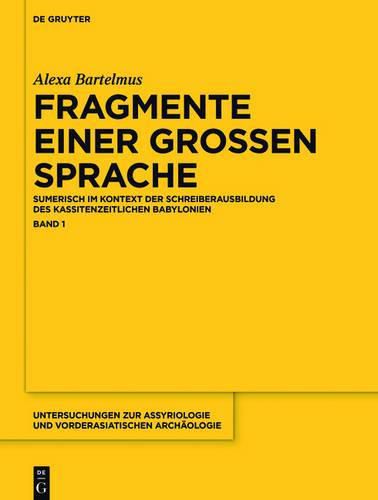Readings Newsletter
Become a Readings Member to make your shopping experience even easier.
Sign in or sign up for free!
You’re not far away from qualifying for FREE standard shipping within Australia
You’ve qualified for FREE standard shipping within Australia
The cart is loading…






This title is printed to order. This book may have been self-published. If so, we cannot guarantee the quality of the content. In the main most books will have gone through the editing process however some may not. We therefore suggest that you be aware of this before ordering this book. If in doubt check either the author or publisher’s details as we are unable to accept any returns unless they are faulty. Please contact us if you have any questions.
The present work attempts to close a gap in our knowledge of the history of Sumerian between the extensive and well-understood corpus of texts from the late 3rd to early 2nd millennia B.C.E. and the sparsely-attested Sumerian of the 1st millennium BCE. Consulting new textual materials from the Vorderasiatisches Museum of Berlin, this investigation devotes special attention to key linguistic features of Sumerian in this epoch, the contexts and ideological significance of its use, and scribal education in Kassite Babylonia generally. Although it may seem to handle disparate themes at first glance, these topics are in fact linked since scribal education provided the key source for knowledge of Sumerian in a time when there were no longer native Sumerian speakers. The analysis and the comparison with previous and subsequent epochs provided here allow lines of development and regional trends to come into clearer view, but they also show the inherent difficulty in describing Kassite Sumerian as a language and in assessing its quality.
$9.00 standard shipping within Australia
FREE standard shipping within Australia for orders over $100.00
Express & International shipping calculated at checkout
This title is printed to order. This book may have been self-published. If so, we cannot guarantee the quality of the content. In the main most books will have gone through the editing process however some may not. We therefore suggest that you be aware of this before ordering this book. If in doubt check either the author or publisher’s details as we are unable to accept any returns unless they are faulty. Please contact us if you have any questions.
The present work attempts to close a gap in our knowledge of the history of Sumerian between the extensive and well-understood corpus of texts from the late 3rd to early 2nd millennia B.C.E. and the sparsely-attested Sumerian of the 1st millennium BCE. Consulting new textual materials from the Vorderasiatisches Museum of Berlin, this investigation devotes special attention to key linguistic features of Sumerian in this epoch, the contexts and ideological significance of its use, and scribal education in Kassite Babylonia generally. Although it may seem to handle disparate themes at first glance, these topics are in fact linked since scribal education provided the key source for knowledge of Sumerian in a time when there were no longer native Sumerian speakers. The analysis and the comparison with previous and subsequent epochs provided here allow lines of development and regional trends to come into clearer view, but they also show the inherent difficulty in describing Kassite Sumerian as a language and in assessing its quality.